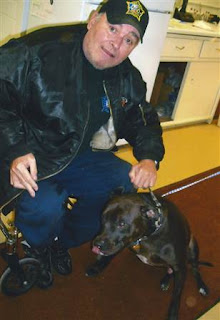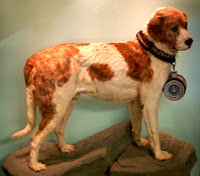 5.) Our top 5 opens up Cataburun, a Turkish hunting dog, and rareness or the most distinctive trait is identified by its "split-nose." In Turkey, double nosed cataburuns were most likely bred for hunting purposes. They are known for their superior ability to pick up scents and fast instinctual movements while hunting in extreme areas.
5.) Our top 5 opens up Cataburun, a Turkish hunting dog, and rareness or the most distinctive trait is identified by its "split-nose." In Turkey, double nosed cataburuns were most likely bred for hunting purposes. They are known for their superior ability to pick up scents and fast instinctual movements while hunting in extreme areas. 4.) Next on our list is the Mexican Hairless Dog, known in Mexico as Xoloitzcuitli. According to archaeological evidence, these rare hairless breed of dogs have lived in Mexico for over 3000 years and this hairless exterior is attributed to adaptation to the heat of tropical regions. Due to their petite shape and fragile demeanor, this breed of dog has become a bit of a fashion accessory.
4.) Next on our list is the Mexican Hairless Dog, known in Mexico as Xoloitzcuitli. According to archaeological evidence, these rare hairless breed of dogs have lived in Mexico for over 3000 years and this hairless exterior is attributed to adaptation to the heat of tropical regions. Due to their petite shape and fragile demeanor, this breed of dog has become a bit of a fashion accessory. 3.) Another fascinating breed is the Chow Chow, which is distinguished by its lion-like mane of hair, its black and blue tongue typical of a bear, its near-straight hind legs, and fluffy fur coat. The distinctive black and blue tongue also leads breeders to believe that the Chow Chow is also a distant relative to the Chinese Shar-Pei. Chow Chows are very famous not only due to its rare features, but also for their very friendly nature.
3.) Another fascinating breed is the Chow Chow, which is distinguished by its lion-like mane of hair, its black and blue tongue typical of a bear, its near-straight hind legs, and fluffy fur coat. The distinctive black and blue tongue also leads breeders to believe that the Chow Chow is also a distant relative to the Chinese Shar-Pei. Chow Chows are very famous not only due to its rare features, but also for their very friendly nature. 2.) The most distinctive trait of the Norwegian Lundehund is its six toes that allows the dog to gain traction while running the fields and climbing relatively mountainous terrain. The Loundehund is classified as a hunting dog and its main prey are birds. Among its many traits, the most amusing would have to be its ability to bend its heads 180 degrees over the sholders and plug the ears to avoid any moist and dirt inside.
2.) The most distinctive trait of the Norwegian Lundehund is its six toes that allows the dog to gain traction while running the fields and climbing relatively mountainous terrain. The Loundehund is classified as a hunting dog and its main prey are birds. Among its many traits, the most amusing would have to be its ability to bend its heads 180 degrees over the sholders and plug the ears to avoid any moist and dirt inside. 1.) The rarest breed of them all is gifted to a very rare wild dog: the New Guinea Singing Dogs. We should remember about our rare wild dogs, who prove that our little friends are instinctively intelligent animals. The New Guinea Singing Dog is a wild dog well known for its unique howling similar to wolfs. Therefore, they are often related to the wild Australian dingos.
1.) The rarest breed of them all is gifted to a very rare wild dog: the New Guinea Singing Dogs. We should remember about our rare wild dogs, who prove that our little friends are instinctively intelligent animals. The New Guinea Singing Dog is a wild dog well known for its unique howling similar to wolfs. Therefore, they are often related to the wild Australian dingos.Of course there are great varieties of other rare dogs all over the world, but I believe those top 5 have very unique and distinctive features that the mother nature has imposed on our little friends as a good sign to stop stereotyping even animals. Moreover, if you would like to rescue one of those rare little friends or you know one of them in danger, you should contact our shelter in Las Vegas area: Little Friends Foundation.





























